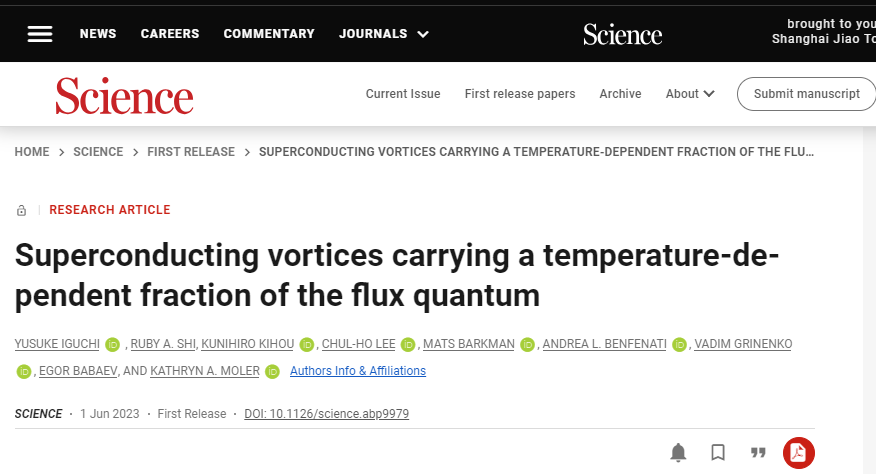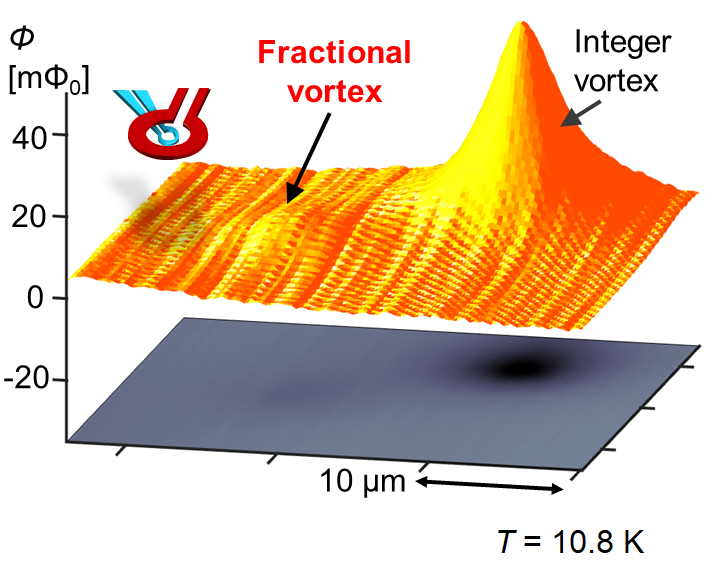
The international research team from Stanford University (US), AIST Tsukuba (Japan), KTH Stockholm (Sweden) and T.D. Lee Institute (China) reports the discovery of unquantized vortices in a bulk multicomponent Ba1-xKxFe2As2 superconductor [1]. The discovery of the unquantized vortices has considerable fundamental importance, providing new insight into the multicomponent nature of superconductivity. Paper link:https://www.science.org/doi/10.1126/science.abp9979
Egor Babaev from KTH Stockholm says: “In a classical fluid, such as a cup of coffee, one can create with a spoon a large or small vortex. Similarly, in a classical gas, in an atmosphere, one can create a small whirl or a very large vortex: tornadoes. It is very different in a quantum fluid.”
In 1948, London published a paper in which he arrived at the conclusion that magnetic flux under certain conditions can pass through a superconductor if it has a quantum vortex of electrons. Because electrons are electrically charged, the vortex carries magnetic flux, and this magnetic flux can change only in discrete steps. The magnitude of a step is called magnetic flux quantum.
The expression for flux quantization in a superconducting cavity predicted by London to be Φ0 = hc/e with h – Plank constant, c – speed of light and e – electron charge had not been universally accepted until the 1960s. The magnetic flux quantization was first directly observed experimentally in 1961.
The magnetic flux quantum is defined through fundamental physical constants. For more than half of a century, all experiments on superconductors have shown magnetic flux quantization as a function of fundamental constants despite the great diversity of superconducting materials. On rare occasions, on specially manufactured defects, one could see trapping of half of the flux quantum, but, again, that was a function of only fundamental constants.
Egor Babaev says: “In 2001, I conjectured there could be vortices that instead can carry an arbitrary function of magnetic flux quantum. The argument was based on the assumption that one can have vorticity only in one of the multiple bands, loosely speaking only in a part of the electronic population. Since electrons are indistinguishable particles and are not independently conserved in different bands, the idea faced a lot of scepticism in the early days, as many people thought that it contradicted some symmetry principles involved in Ginzburg and Landau theory.
Kathryn Moler from Stanford University says, “I have been looking at vortices in novel superconductors for over 25 years, and I have never seen this before.”
Kathryn Moler adds: “Professor Babaev has been telling me for years that we could see something like this, but I didn’t believe it until Yusuke Iguchi actually saw it and conducted a number of detailed checks,” she says.
Vadim Grinenko from T.D.Lee Institute says: "Previously, I reported an experimental discovery of the fermion quadrupling state in the same material. Egor Babaev told me that at temperatures below the fermion quadrupling state, the superconducting state should also have fractional vortices, but no one saw such vortices in half of a century of research. The absence of fractional vortices was not a surprise for the community because even if one would accept that theory is correct, even according to this theory, fractional vortices should be very energetically expensive and could not be created by merely applying a magnetic field. It was very exciting for all co-authors when Yusuke Iguchi from Stanford University observed that these vortices carry only a fraction of the flux quantum, and the fraction is temperature dependent."

Source: SJTU TDLI
Editor on Duty: Cheng Yan

